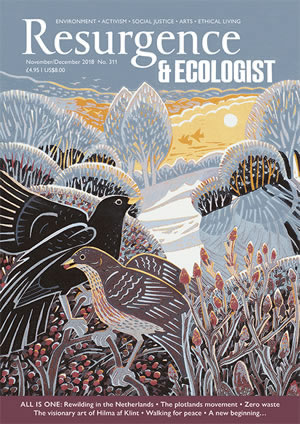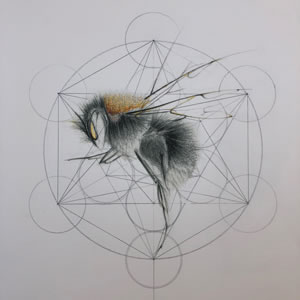When Thor Hanson visits the almond orchards in California’s central valley, he finds mile after mile of landscape devoted to the growth of this highly profitable crop. All other vegetation has been erased to facilitate nut harvesting, and here lies a great conundrum. The elimination of flowers from the orchard floor means that no insects, and importantly no bees, can live there, but almond trees require pollination by bees to set fruit. So, for several weeks while the almonds are in flower, thousands of honeybee hives are trucked to California to provide that pollination, at great expense. In the 19th century, the naturalist John Muir called the central valley “the world’s greatest bee-pasture”, but now, thanks to profit-motivated intensive agriculture, it is a bee desert, and much the same elimination of bees has occurred elsewhere in the world where intensively grown monocultures dominate. It’s not difficult to understand why bees are in decline, and Hanson recognises that they need help.
In his new book, Buzz, Hanson sets out to raise awareness of these important insects and their plight. His aim is to make people curious so that they will go outside and look at the bees around them and hopefully defend them. But rather than giving us a list of bee facts in the style of a textbook, Hanson recounts his meetings with people studying or working with bees. This is a clever structure: he lets the experts tell their stories so that along the way, almost without noticing, we learn about bee biology, bee evolution, bee importance and bee threats. Hanson is an award-winning author and biologist, his style is chatty and open, and we are carried along with his enthusiasm. As I read I often imagined myself watching a TV Nature programme.
Many readers will, I expect, be surprised to learn that the largest group of bees on the planet is the solitary bees, so called for their non-social lifestyles. These insects hugely outnumber the more familiar honeybees and bumblebees, which are known for forming large social colonies. Hanson describes meeting Brian Griffin, who breeds solitary orchard mason bees for fruit pollination. As Griffin tells his story, we learn about the lives of solitary bees and their parasites. Hanson continues this gentle but persuasive induction into the world of these overlooked insects by visiting a bee cliff, the site of a massive aggregation of solitary bee nests supported by a profusion of wild flowers near his home in the Pacific Northwest of the USA. It is often said that every third bite of our food depends on bees, so that without them our diets would be poorer and blander. To emphasise this point, Hanson goes “someplace totally unexpected” to look at the contribution of bees to our food. His unexpected place is the nearest branch of McDonald’s, where, armed with tweezers and a hand lens, he deconstructs a Big Mac to see how much of this highly popular product depends on bee pollination. He receives “more than a few curious glances” from the family at the next table, and I suppose he is being deliberately ironic, but couldn’t he have chosen a different meal to analyse?
The last section of the book is entitled ‘The Future of Bees’. Here Hanson confronts the threats facing bees: the four Ps – parasites, poor nutrition, pesticides and pathogens. Perhaps he could usefully have added a fifth P: people. Most of the threats facing bees and causing their decline depend directly or indirectly on people and their actions. This also means that people have it within their grasp to save bees from these threats, and here I felt that Hanson missed an opportunity. He ably describes the biology and the importance of bees, but surely he could have also set out a manifesto for arresting their decline before it is too late?







